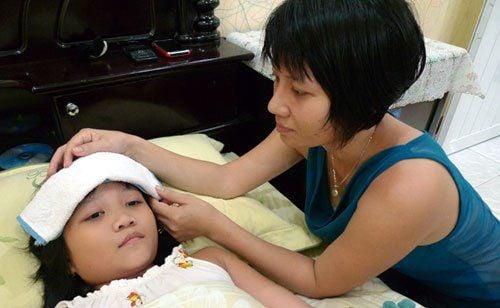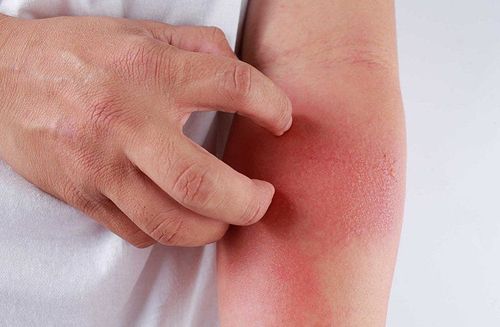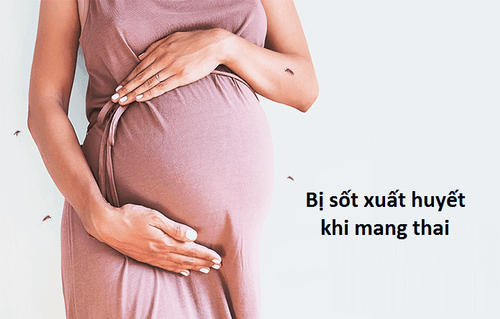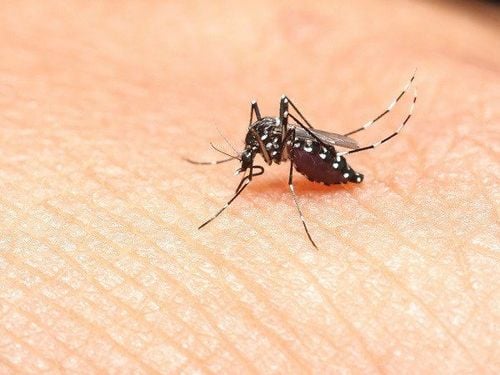This is an automatically translated article.
Dengue fever is a dangerous infectious disease and often breaks out in the rainy season. Some signs of dengue fever can be recognized early, such as: high fever, joint pain, headache, vomiting, rash...Dengue fever is breaking out across the country
According to the statistics of dengue epidemic from the beginning of the year until now from the Ministry of Health, the whole country has recorded more than 58,000 cases, of which there have been some deaths in the provinces of Ba Ria - Vung Tau, Tien Giang and Tien Giang. Binh Thuan.According to data over the same period in 2018, the number of cases this year has increased by 3.3 times, although this is not the peak of the epidemic compared to last year. Doctors predict that in the next few weeks, when the rains begin to appear, the dengue epidemic situation will continue to increase significantly.
In Hanoi, according to information from the Department of Health, there are now more than 400 cases of dengue fever and no deaths have been recorded. At the same time, the Department of Health organized insect control, disease vector monitoring and carried out general environmental sanitation to proactively prevent dengue outbreaks. In addition, the Department also conducts investigation and handling in areas where many cases have been recorded in recent times.
In the city. According to an assessment of the situation of dengue epidemic in the first 12 weeks of 2019, the progress of dengue fever in the city is consistent with the assessment of the World Health Organization: The disease usually occurs in In urban areas, where the population density is dense and in areas in the process of urbanization, infrastructure has not kept pace with the general development of economy and population. Dengue fever is a disease that greatly affects the health of the whole city, so besides each family and residential area, it is necessary to have active participation from local authorities, departments and mass organizations. .
On the other hand, many dengue patients' deaths mainly stem from subjectivity, improper self-treatment at home, arriving at the hospital too late on the 4th, 5th day of the illness. At this time, the patient was hospitalized, but his condition was too serious, the prognosis was very bad, so it was difficult for the doctors to save the patient's life.
For cases of mild dengue fever, the patient can completely treat at home, but on the condition that they must visit a doctor and be advised on how to treat at home, not by themselves. Consider home treatment right from the start when you notice the signs of the disease.

Bệnh nhân hoàn toàn có thể điều trị tại nhà sau khi được bác sĩ thăm khám và hướng dẫn
Early Signs of Dengue Dengue fever is divided into three categories: classical dengue (mild form), haemorrhagic fever and dengue hemorrhagic fever (dengue shock syndrome). The early signs of dengue also depend on the type of disease:
1. Classical (mild) Dengue Manifestations The mild form of dengue occurs in people who get it for the first time because they haven't had it yet. have immunity to the disease. Accordingly, the patient presents with typical symptoms and does not lead to complications. Specifically, the disease usually begins with a fever and usually lasts for 4 - 7 days from the time of being transmitted by mosquitoes. In addition to fever, there are also symptoms such as:
Musculoskeletal pain Fever as high as 40.5 degrees Celsius Severe headache Unusual pain in the eye sockets Nausea, vomiting Skin rash. Usually, the dengue skin rash may appear on the body 3 to 4 days after the onset of the fever, and then subside after about 1 to 2 days. The patient may then develop the rash again in the following days.

Bệnh nhân sốt xuất huyết thường có biểu hiện sốt cao
2. Signs of Dengue with Bleeding Signs of dengue fever include all of the above symptoms of mild dengue with blood vessel and lymphatic damage. Consequences cause nosebleeds, bleeding in the gums or bleeding under the skin, causing bruises. This form of the disease has the potential to lead to death.
3. Early Signs of Dengue Fever (Dengue shock syndrome) This form of the disease is considered the most severe form of dengue fever – includes all manifestations of mild dengue fever, accompanied by symptoms bleeding and including plasma escaping from blood vessels, causing massive internal and external bleeding, potentially resulting in shock.
Dengue shock syndrome often occurs in the following illnesses, when the patient has active (due to previous disease) or passive (from mother to child) immunity to a viral antigen. disease-causing withdrawal. For this form, the manifestations of dengue fever usually develop suddenly after 2 to 5 days (the antipyretic phase). This form of the disease is common in children (sometimes in adults). Dengue shock syndrome is potentially fatal, especially in children and adolescents.
For children with dengue fever will notice signs of high fever, parents often confuse it with a cold or a respiratory infection. Usually, the course of the disease ranges from 2 to 7 days, the dangerous situation usually occurs on the fourth and fifth fever day. Accordingly, the patient is always in a state of fatigue, fatigue, restlessness, little urine, light fast pulse, low blood pressure, more seriously, the pulse and blood pressure cannot be measured (this is a manifestation of pulse collapse). .
The last and most dangerous symptom of severe dengue infection is shock, which usually appears on the 3rd - 6th day of the illness cycle. A patient in shock will be extremely life-threatening if not treated promptly.
Dengue fever is a dangerous disease, anyone can be infected, especially in the recent outbreak season. Each outbreak of dengue fever, the consequences are extremely heavy in terms of both health and medical costs. When detecting any signs or symptoms that suspect dengue fever, patients need to visit a medical facility for accurate diagnosis and prompt treatment.
Please dial HOTLINE for more information or register for an appointment HERE. Download MyVinmec app to make appointments faster and to manage your bookings easily.













